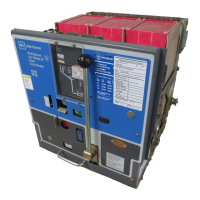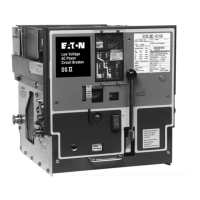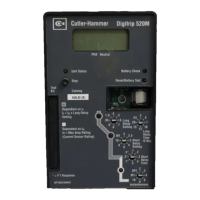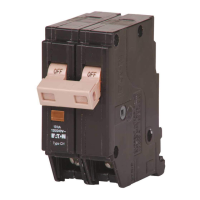Page 34
a)
Close-Relea&e
Interlock
c) Breaker
in
Connect Position (Without Interlock
Screw,
See
Section 5.1.8.2)
1.8. 33-790-11
b)
Breaker
in
Remove
Position
/
d) Bretzker
in
Connect
Position
(With
Interlock
Screw,
See Section 5.1.8.2)
1. lnterloek
Plat11
Assembly 5. Narrow Slot
9.
CIOll8
Bar
2. Drivtt Pin 6. Wide
Slot
1
O.
Close Bar Pivot
3.
lnterloek Screw 7. Pin
"A"
11. Close Bar
cam
4. Lwering Device
Shaft
8.
Pin
"B"
12.
Levering Device
Arm
Fig. 30 Close-Release Interlock to Discharge Springs on Levering Out
of
Compartment
and
Conn. Position no Manual
Close Interlock
5.1.8.2 Connected Breaker Manual Close Interlock
The purpose
of
this Interlock is to make possible a choice
between being able to close the breaker by hand-push on
the Close bar and not being able to, with the breaker
in
the CONNECT position. Some consider it undesirable to
do so. Referring to Figure 30a, the Interlock Plate
Assembly is keyed loosely to the levering device shaft by
a drive pin as shown.
If
the interlock screw is omitted, the
interlock plate can be rotated freely on the shaft about 10
degrees. This is because the "wide" slot is considerably
wider than the drive pin.
If
the interlock screw is
in
place
in
the "narrow" slot, the Interlock Plate has practically no
Effective October 1998
Courtesy of NationalSwitchgear.com

